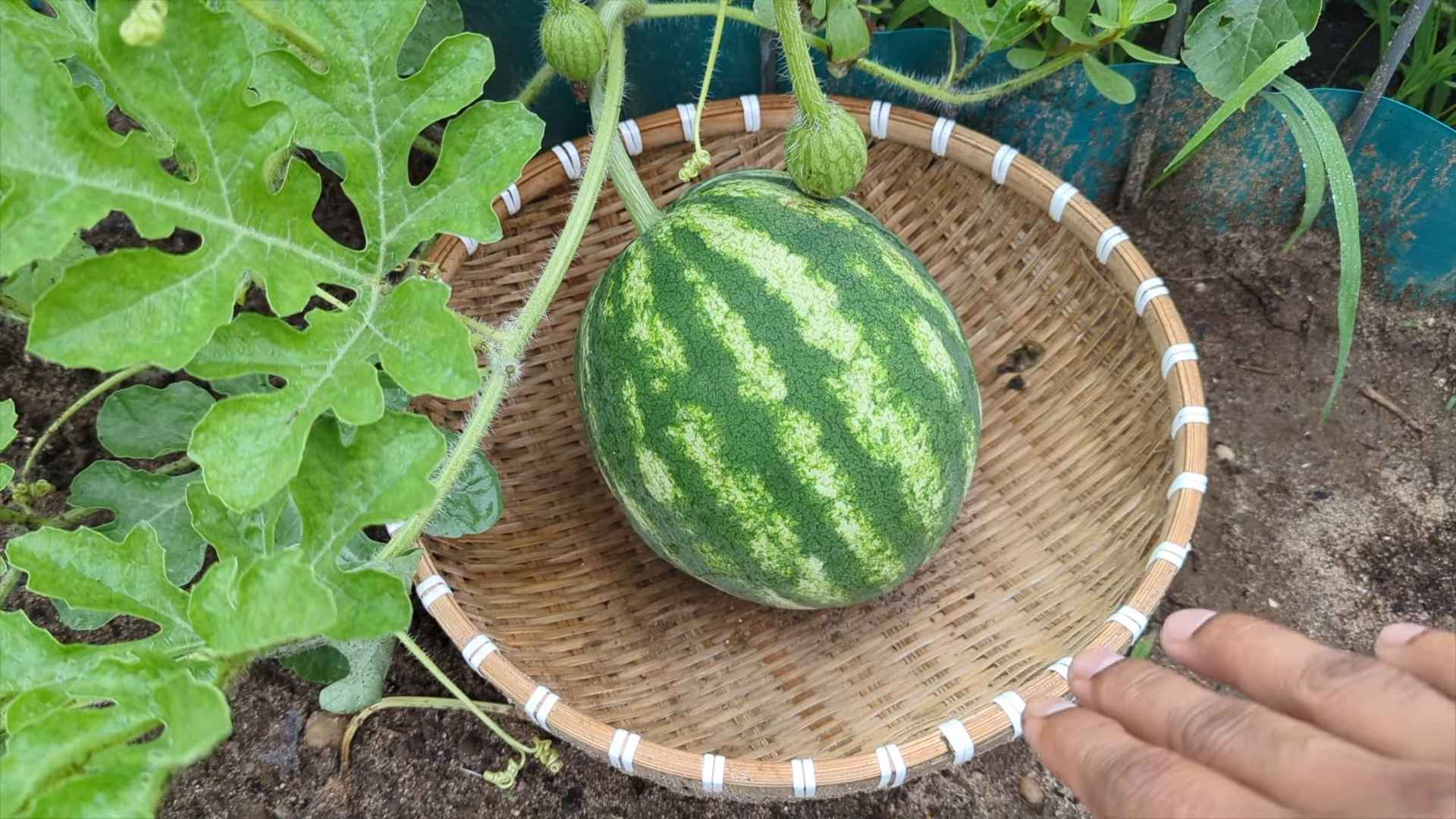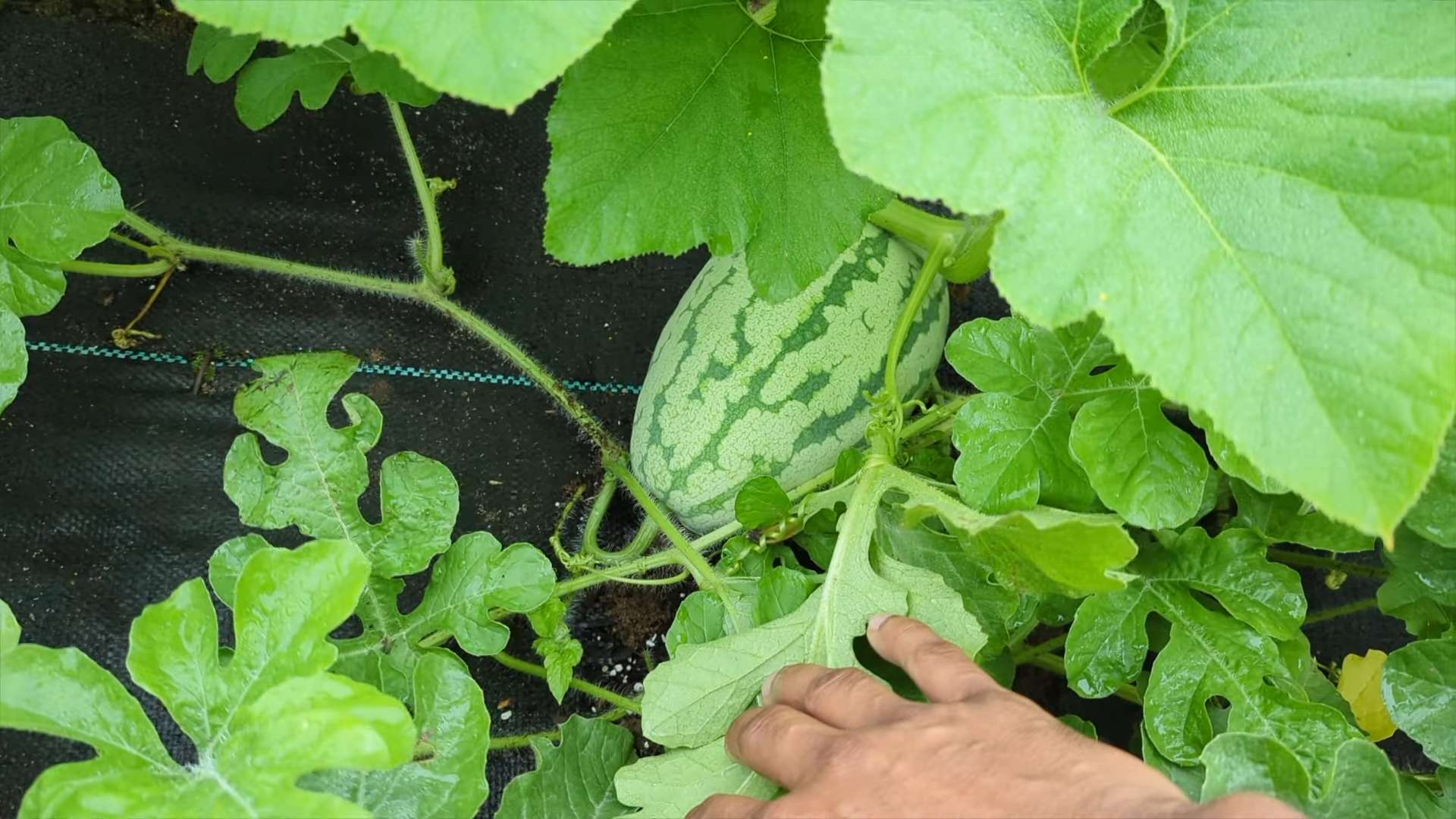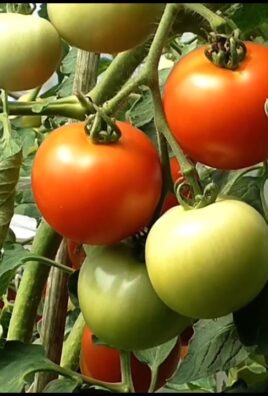Grow Watermelons at Home? Absolutely! Imagine biting into a juicy, sweet watermelon that you nurtured from seed to fruit, right in your own backyard. Forget those bland, store-bought melons – we’re talking about homegrown goodness bursting with flavor. For centuries, watermelons have been a symbol of summer, abundance, and shared joy, enjoyed in cultures around the globe. From ancient Egypt, where they were depicted in hieroglyphics, to modern-day picnics, watermelons hold a special place in our hearts (and stomachs!).
But let’s be honest, the thought of cultivating these sprawling fruits can seem daunting. Many people believe you need acres of land and a green thumb blessed by the gardening gods. That’s where this DIY guide comes in! I’m here to debunk those myths and show you simple, effective tricks to grow watermelons at home, even if you have limited space. Whether you have a sprawling garden or just a sunny balcony, I’ll share my secrets to help you harvest your own delicious watermelons. Get ready to impress your friends and family with your newfound gardening prowess – let’s get growing!

Grow Your Own Juicy Watermelons: A Beginner’s Guide
Hey there, fellow gardening enthusiasts! Ever dreamt of biting into a sweet, homegrown watermelon on a hot summer day? Well, dream no more! Growing your own watermelons is totally achievable, even if you’re a beginner like I once was. It takes a little planning and effort, but trust me, the reward is absolutely worth it. I’m going to walk you through everything you need to know, from choosing the right variety to harvesting that perfect melon. Let’s get started!
Choosing the Right Watermelon Variety
First things first, you need to pick a watermelon variety that suits your climate and garden space. Some varieties are better suited for shorter growing seasons, while others need plenty of room to sprawl. Here’s a quick rundown of some popular choices:
* ‘Sugar Baby’: This is a great option for beginners and those with limited space. It’s a compact variety that produces small, sweet melons in about 75 days.
* ‘Crimson Sweet’: A classic choice known for its large size, bright red flesh, and excellent flavor. It takes around 85 days to mature.
* ‘Jubilee’: Another large variety with a distinctive striped rind. It’s disease-resistant and produces flavorful melons in about 95 days.
* ‘Yellow Doll’: If you’re looking for something different, try this yellow-fleshed watermelon. It’s sweet, crisp, and matures in about 70 days.
* ‘Bush Sugar Baby’: Perfect for container gardening! This variety is a compact bush type that produces smaller watermelons.
Consider your local climate and the amount of space you have available when making your decision. Check with your local nursery or garden center for recommendations on varieties that thrive in your area.
Preparing Your Garden Bed
Watermelons are heavy feeders, meaning they need a lot of nutrients to grow and produce those delicious fruits. So, preparing your garden bed properly is crucial.
* Sunlight: Watermelons need at least 6-8 hours of direct sunlight per day. Choose a location in your garden that gets plenty of sun.
* Soil: Watermelons prefer well-drained, sandy loam soil with a pH between 6.0 and 6.8. If your soil is heavy clay, amend it with compost and other organic matter to improve drainage.
* Nutrients: Before planting, amend your soil with plenty of compost, well-rotted manure, or a balanced fertilizer. Watermelons need a good supply of nitrogen, phosphorus, and potassium.
Starting Your Watermelon Seeds
You can either start your watermelon seeds indoors or direct sow them in your garden. Starting them indoors gives you a head start, especially if you live in a cooler climate with a shorter growing season.
* Starting Indoors:
* Start your seeds about 4-6 weeks before the last expected frost.
* Use peat pots or biodegradable pots to avoid disturbing the roots when transplanting.
* Fill the pots with a seed-starting mix.
* Sow 2-3 seeds per pot, about 1 inch deep.
* Keep the soil moist but not soggy.
* Place the pots in a warm location, such as on a heat mat or near a sunny window.
* Once the seedlings emerge, thin them to one plant per pot.
* Direct Sowing:
* Wait until the soil has warmed up to at least 70°F (21°C).
* Sow the seeds directly into the garden, about 1 inch deep and 2-3 feet apart.
* Water the soil well.
Transplanting Your Watermelon Seedlings
If you started your seeds indoors, it’s time to transplant them into your garden.
* Harden Off: Before transplanting, you need to harden off your seedlings. This means gradually exposing them to outdoor conditions over a period of 7-10 days. Start by placing them in a sheltered location for a few hours each day, gradually increasing the amount of time they spend outdoors.
* Transplanting:
* Choose a cloudy day to transplant your seedlings to minimize stress.
* Dig a hole that is slightly larger than the pot.
* Gently remove the seedling from the pot, being careful not to damage the roots.
* Place the seedling in the hole and backfill with soil.
* Water the seedling well.
* Space the plants 2-3 feet apart, depending on the variety.
Caring for Your Watermelon Plants
Once your watermelon plants are in the ground, it’s important to provide them with the care they need to thrive.
* Watering: Watermelons need consistent watering, especially during hot, dry weather. Water deeply and regularly, aiming for about 1-2 inches of water per week. Avoid overhead watering, as this can lead to fungal diseases. Drip irrigation is a great option for watermelons.
* Fertilizing: Fertilize your watermelon plants every 2-3 weeks with a balanced fertilizer. You can also side-dress them with compost or well-rotted manure.
* Weeding: Keep your garden bed free of weeds, as they can compete with your watermelon plants for nutrients and water. Mulching around the plants can help suppress weeds and retain moisture.
* Pruning: While not essential, pruning can help improve air circulation and encourage fruit production. Remove any suckers (small shoots that grow from the base of the plant) and any dead or diseased leaves.
* Pollination: Watermelons need to be pollinated in order to produce fruit. If you’re not seeing any fruit set, you may need to hand-pollinate the flowers. To do this, use a small paintbrush to transfer pollen from the male flowers to the female flowers. The female flowers have a small swelling at the base of the flower, which will eventually become the watermelon.
Protecting Your Watermelons from Pests and Diseases
Watermelons can be susceptible to a variety of pests and diseases. Here are some common problems and how to deal with them:
* Cucumber Beetles: These small beetles can damage leaves and transmit diseases. Control them with insecticidal soap or neem oil.
* Squash Bugs: These pests can suck the sap from your watermelon plants, causing them to wilt and die. Handpick them off the plants or use insecticidal soap.
* Aphids: These tiny insects can also suck the sap from your watermelon plants. Control them with insecticidal soap or a strong stream of water.
* Powdery Mildew: This fungal disease can cause a white, powdery coating on the leaves. Prevent it by providing good air circulation and avoiding overhead watering. Treat it with a fungicide if necessary.
* Anthracnose: This fungal disease can cause dark, sunken spots on the leaves and fruit. Prevent it by providing good air circulation and avoiding overhead watering. Treat it with a fungicide if necessary.
Harvesting Your Watermelons
Knowing when to harvest your watermelons can be tricky, but here are a few signs to look for:
1. The tendril closest to the fruit turns brown and dries up. This is a reliable indicator that the watermelon is ripe.
2. The underside of the watermelon (where it rests on the ground) turns from white to yellow. This is another sign that the watermelon is ripe.
3. The watermelon sounds hollow when you thump it. This takes some practice, but once you get the hang of it, it’s a good way to tell if a watermelon is ripe.
4. The rind becomes dull and loses its shine.
Once you think your watermelon is ripe, use a sharp knife to cut it from the vine, leaving a few inches of stem attached.
Enjoying Your Homegrown Watermelon
Congratulations! You’ve successfully grown your own watermelon. Now it’s time to enjoy the fruits (or rather, the melon) of your labor.
* Chill your watermelon in the refrigerator for a few hours before serving.
* Cut it into wedges or cubes and enjoy!
* You can also use your watermelon to make juice, smoothies, or salads.
Growing watermelons can be a rewarding experience. With a little planning and effort, you can enjoy the taste of homegrown watermelons all summer long. Happy gardening!

Conclusion
So, there you have it! Growing watermelons at home might seem daunting at first, but with a little patience, the right techniques, and this simple DIY trick, you’ll be sinking your teeth into juicy, homegrown goodness before you know it. We’ve walked you through the process, highlighting the key steps and offering insights to maximize your success. This isn’t just about saving money; it’s about experiencing the unparalleled satisfaction of nurturing a plant from seed to fruit, knowing exactly what went into its growth, and enjoying a flavor that store-bought watermelons simply can’t match.
This DIY trick, specifically, is a game-changer because it addresses one of the most common challenges faced by home gardeners: ensuring proper pollination and fruit set. By understanding and implementing this technique, you’re significantly increasing your chances of a bountiful harvest. Think of it as giving your watermelon plants a helping hand, ensuring they have everything they need to thrive.
But don’t stop there! Experiment with different watermelon varieties to discover your personal favorite. Try growing smaller, personal-sized watermelons like Sugar Baby or explore unique heirloom varieties for a burst of unexpected flavor. You can also adapt the DIY trick to suit your specific growing conditions. For example, if you live in a particularly humid climate, ensure adequate airflow around your plants to prevent fungal diseases. Consider using raised beds or containers to improve drainage and soil quality.
Remember, gardening is a journey of learning and discovery. Don’t be afraid to make mistakes and adapt your approach as needed. The most important thing is to get started and enjoy the process. The reward of biting into a sweet, refreshing watermelon that you grew yourself is well worth the effort.
We’re confident that you’ll find this DIY trick invaluable in your watermelon-growing endeavors. Now it’s your turn! Give it a try, and don’t forget to share your experiences with us. We’d love to hear about your successes, challenges, and any variations you’ve discovered. Post pictures of your homegrown watermelons on social media using #HomegrownWatermelon and tag us so we can celebrate your achievements together. Let’s build a community of passionate gardeners, sharing knowledge and inspiring each other to grow the best watermelons possible! This DIY trick is your secret weapon to watermelon success.
Frequently Asked Questions (FAQ)
Q: What exactly is the DIY trick you’re referring to?
A: The DIY trick we’ve been emphasizing throughout this article focuses on hand-pollinating your watermelon flowers. Watermelons rely on insects, primarily bees, for pollination. However, in some areas, bee populations may be low, or weather conditions may not be conducive to pollination. Hand-pollination ensures that the female flowers are adequately pollinated, leading to better fruit set and a more abundant harvest. It involves using a small paintbrush or cotton swab to transfer pollen from the male flowers to the female flowers.
Q: How do I identify male and female watermelon flowers?
A: Identifying male and female watermelon flowers is crucial for successful hand-pollination. The easiest way to distinguish them is by looking at the base of the flower. Female flowers have a small, immature watermelon (a tiny swelling) between the flower and the stem. Male flowers, on the other hand, have a simple stem connecting the flower to the vine. They lack the small, immature fruit. Male flowers typically appear first, followed by female flowers.
Q: When is the best time to hand-pollinate watermelon flowers?
A: The best time to hand-pollinate watermelon flowers is in the early morning, ideally between 6:00 AM and 10:00 AM. This is when the pollen is most viable and the flowers are fully open. Choose a dry, sunny day for optimal results. Avoid hand-pollinating on rainy or humid days, as the pollen may become clumpy and less effective.
Q: How do I actually hand-pollinate the flowers?
A: The process is quite simple. First, gently collect pollen from a male flower using a small paintbrush or cotton swab. Carefully brush the anthers (the pollen-bearing parts) of the male flower to collect the pollen. Then, gently transfer the pollen to the stigma (the sticky center) of the female flower. Make sure to cover the stigma thoroughly with pollen. You can use the same paintbrush or cotton swab for multiple female flowers, but it’s best to use fresh pollen for each flower if possible.
Q: How do I know if the hand-pollination was successful?
A: If the hand-pollination was successful, you should see the small, immature watermelon at the base of the female flower start to swell and grow within a few days. If the flower withers and falls off without the fruit developing, it means the pollination was unsuccessful. You can try hand-pollinating again if you have more female flowers available.
Q: What if I don’t have any male flowers available?
A: If you don’t have any male flowers available, you can try collecting pollen from male flowers on other watermelon plants in your garden or even from a neighbor’s garden (with their permission, of course!). You can also try storing pollen in the refrigerator for a short period (up to 24 hours), but its viability will decrease over time. Ultimately, the best solution is to ensure that your watermelon plants are healthy and producing both male and female flowers.
Q: What are some common problems that can affect watermelon growth?
A: Several common problems can affect watermelon growth, including pests like aphids and squash bugs, diseases like powdery mildew and fusarium wilt, and nutrient deficiencies. Regularly inspect your plants for signs of pests or diseases and take appropriate action. Ensure that your plants receive adequate water, sunlight, and nutrients. Amend your soil with compost or other organic matter to improve its fertility and drainage.
Q: Can I grow watermelons in containers?
A: Yes, you can grow watermelons in containers, but you’ll need to choose a large container (at least 20 gallons) and a compact watermelon variety like Sugar Baby or Bush Sugar Baby. Ensure that the container has good drainage and use a high-quality potting mix. Water container-grown watermelons regularly and fertilize them every few weeks. You may also need to provide support for the vines as they grow.
Q: How long does it take for watermelons to mature?
A: The time it takes for watermelons to mature depends on the variety and growing conditions. Generally, it takes between 70 and 90 days from planting to harvest. You can tell when a watermelon is ripe by looking at the tendril closest to the fruit. When the tendril turns brown and dry, the watermelon is usually ready to harvest. You can also thump the watermelon; a ripe watermelon will sound hollow. The spot where the watermelon rests on the ground should also turn from white to yellow.
Q: What kind of fertilizer should I use for watermelons?
A: Watermelons benefit from a balanced fertilizer with a higher phosphorus content, especially during the early stages of growth. A fertilizer with an NPK ratio of 10-20-10 is a good choice. As the plants start to flower and fruit, you can switch to a fertilizer with a higher potassium content to promote fruit development. Avoid over-fertilizing, as this can lead to excessive vine growth and fewer fruits.
Q: Is this DIY trick only for watermelons?
A: While this DIY trick is particularly beneficial for growing watermelons, the principle of hand-pollination can be applied to other vine crops like squash, pumpkins, and cucumbers. These plants also rely on insect pollination, and hand-pollination can help ensure a good harvest, especially in areas with low bee populations. The process is essentially the same: transfer pollen from the male flowers to the female flowers using a small paintbrush or cotton swab.





Leave a Comment